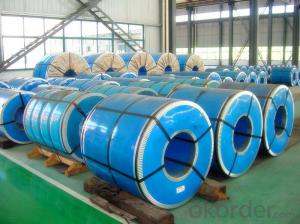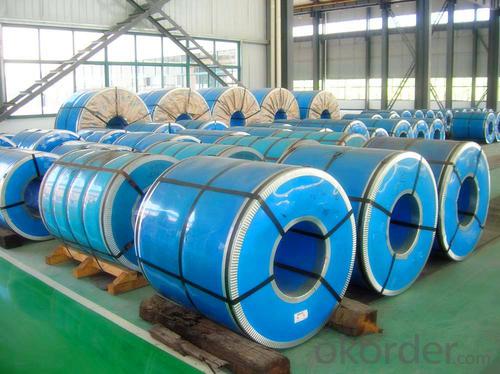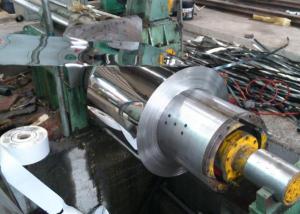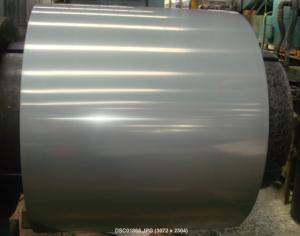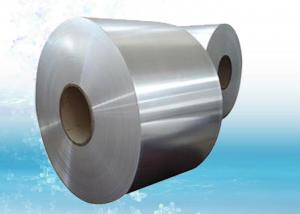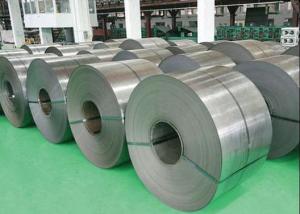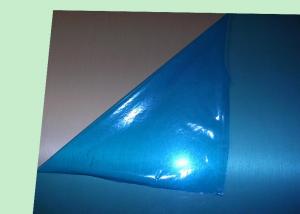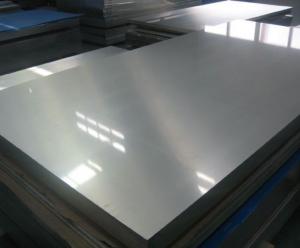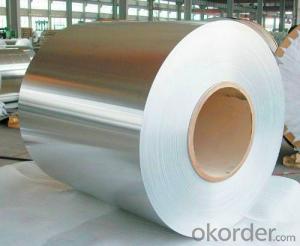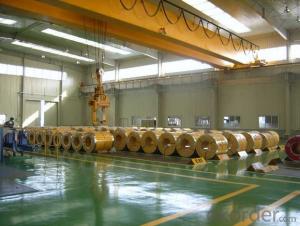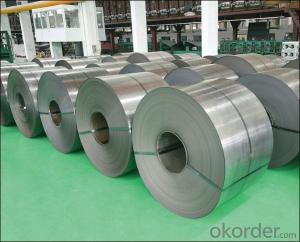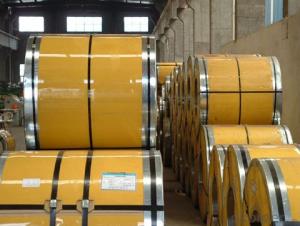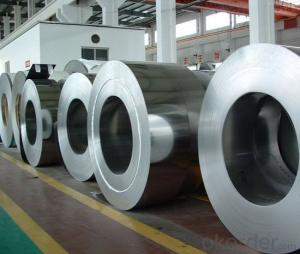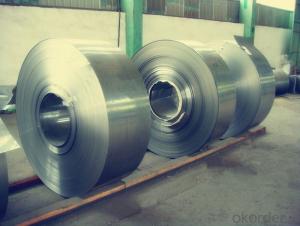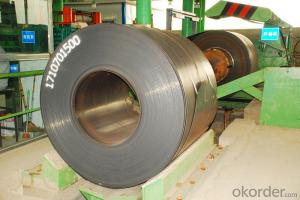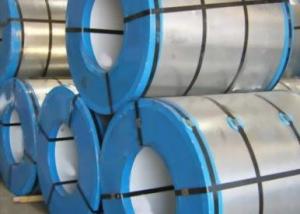Stainless Steel Coil 201 Hot Rolled Narrow Coil J1/J4
- Loading Port:
- Lianyungang
- Payment Terms:
- TT OR LC
- Min Order Qty:
- 400 m.t.
- Supply Capability:
- 5000 m.t./month
OKorder Service Pledge
OKorder Financial Service
You Might Also Like
Hot Rolled Stainless Steel Coil 201 Narrow Strip No.1 Finish
Packaging Detail: For customer's requirement
Delivery Detail: 10-30days
201 Hot Rolled Stainless Steel Coil Specifications
THK:2.3/2.5/3.0/4.0mm
Width:485/510/550/610/1010/1240mm
Face:No.1
201 Hot rolled stainless steel Coil Application
Stainless steel is a production which not easy rust,acid resistance and corrosion resistance,so it is widely
used in light industry,heavy industry,daily necessities and the decoration industry.
201 Hot Stainless Steel Coil Chemical Composition(WT%)
(C):≤0.15, (Si):≤0.75, (Mn):5.5~7.50, (Cr):16.0~18.0, (N):≤0.25, (Ni):3.50~5.50, (P):≤0.060, (S):≤0.030
201 Hot Rolled Stainless Steel Coil
Strength Of Extension:100,000 To 180,000 Psi;
Yield Strength:50,000 To 150,000 Psi
Elongation :55 To 60%;
Modulus Of Elasticity:29,000,000 Psi;
Density :.280lbs/Cubic Inch(7.93g/Cm3)
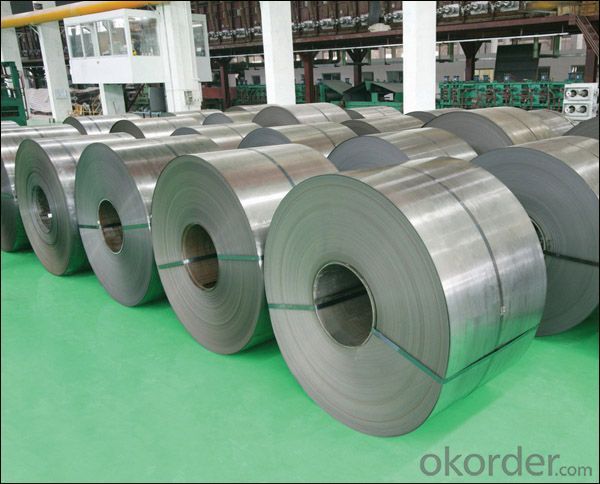
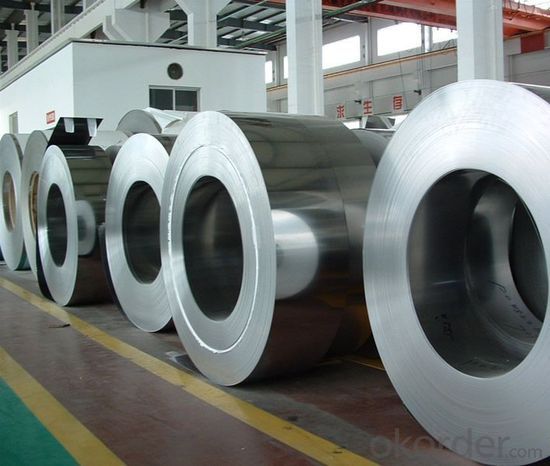

- Q: Can stainless steel strips be used in musical instruments?
- Musical instruments can indeed utilize stainless steel strips. Stainless steel, a versatile and durable material, finds extensive use across multiple industries, including music. It boasts exceptional resistance to corrosion, high strength, and favorable mechanical properties, rendering it suitable for diverse musical instrument applications. Instruments such as guitars, pianos, drums, and other percussion instruments can incorporate stainless steel strips. For instance, stainless steel strips can serve as frets on guitars, delivering a smooth surface for the strings to facilitate clear and crisp sounds. Similarly, in pianos, they can function as keys or hammers, providing a consistent and reliable striking surface for the strings. Moreover, stainless steel strips can contribute to the construction of wind instruments. Brass instruments like trumpets or saxophones can incorporate stainless steel strips as reeds or valves. The corrosion resistance of stainless steel ensures durability and safeguards against moisture and saliva exposure during play, preventing deterioration. Overall, the utilization of stainless steel strips in musical instruments presents numerous advantages. They offer durability, corrosion resistance, and versatility, thereby ensuring optimal instrument performance and long-lasting quality.
- Q: What is the corrosion resistance of stainless steel strips in different environments?
- Stainless steel strips have excellent corrosion resistance in various environments, making them highly versatile and durable. In general, stainless steel is resistant to rust and corrosion caused by moisture, chemicals, and atmospheric conditions. However, the level of corrosion resistance can vary depending on the specific type and grade of stainless steel, as well as the specific environment it is exposed to. For example, stainless steel with a higher chromium content tends to have better corrosion resistance in acidic environments, while those with higher nickel content perform well in salty or marine environments. Overall, stainless steel strips offer reliable corrosion resistance in a wide range of environments, making them suitable for numerous applications.
- Q: Can stainless steel strips be used in telecommunications applications?
- Yes, stainless steel strips can be used in telecommunications applications. They are often used for cable management and support purposes due to their durability, corrosion resistance, and high strength properties. Additionally, stainless steel strips can provide electromagnetic shielding, which is crucial in minimizing interference and ensuring optimal performance in telecommunications equipment.
- Q: What are the dimensions of stainless steel strips?
- The dimensions of stainless steel strips can vary depending on the specific needs and requirements of the application. However, stainless steel strips are commonly available in various thicknesses ranging from 0.1mm to 6mm and widths ranging from 10mm to 2000mm. The length of stainless steel strips can also vary, but it is typically available in coils or rolls of standard lengths, such as 1000mm or 2000mm. Additionally, stainless steel strips can be custom-cut to specific dimensions to suit individual project requirements.
- Q: Are stainless steel strips suitable for conveyor systems?
- Yes, stainless steel strips are highly suitable for conveyor systems. Stainless steel is known for its excellent corrosion resistance, durability, and strength, making it an ideal material for conveyor systems that require continuous operation and exposure to various environmental conditions. Stainless steel strips can withstand high temperatures, moisture, chemicals, and abrasive materials, ensuring a long lifespan and minimal maintenance requirements. Additionally, stainless steel strips have a smooth surface, which reduces friction and allows for efficient material movement on the conveyor. This makes stainless steel strips a preferred choice in industries such as food processing, pharmaceuticals, automotive, and manufacturing, where cleanliness, hygiene, and product integrity are crucial. Overall, stainless steel strips offer reliability, longevity, and performance, making them well-suited for conveyor systems.
- Q: What are the common uses of stainless steel strips in the textile industry?
- Stainless steel strips are commonly used in the textile industry for various purposes such as fabric reinforcement, belt fastening, and tensioning systems. They provide strength and durability to fabrics, ensuring they can withstand the rigors of textile production processes. Additionally, stainless steel strips are also used in textile machinery, including looms and knitting machines, to facilitate smooth and efficient operations.
- Q: Are 111 stainless steel strips suitable for power generation equipment?
- Yes, 111 stainless steel strips can be suitable for power generation equipment. 111 stainless steel is a ferritic stainless steel that contains 11% chromium, which provides good resistance to corrosion and oxidation at high temperatures. This makes it suitable for use in power generation equipment, which often operates at elevated temperatures and is exposed to corrosive environments. Additionally, 111 stainless steel has good mechanical properties, such as high strength and hardness, which are important for withstanding the stresses and strains in power generation equipment. However, the suitability of 111 stainless steel strips for power generation equipment ultimately depends on the specific requirements and conditions of the equipment, so it is important to consult with experts or engineers to ensure the best choice of material.
- Q: Are stainless steel strips easy to clean?
- Indeed, cleaning stainless steel strips is a breeze. Renowned for its non-porous and sleek surface, stainless steel effortlessly repels stains and can be effortlessly wiped clean. A mild detergent or soap with water will suffice for cleansing stainless steel strips. Moreover, stainless steel boasts heat resistance, enabling the utilization of diverse cleaning techniques such as steam cleaning or sterilizing them in boiling water. All in all, stainless steel strips are a hassle-free material that is robust and effortlessly maintained in terms of cleanliness.
- Q: What are the recommended cleaning and maintenance practices for 111 stainless steel strips?
- The recommended cleaning and maintenance practices for 111 stainless steel strips include regular wiping with a mild detergent solution and a soft cloth to remove any dirt or grime. Avoid using abrasive cleaners or scrubbers as they can scratch the surface. Additionally, it is important to dry the strips thoroughly after cleaning to prevent water spots or rusting. For maintenance, periodic polishing with a stainless steel cleaner can help maintain the shine and prevent oxidation.
- Q: What is the Young's modulus of stainless steel strips?
- The Young's modulus of stainless steel strips typically ranges from 190 to 210 gigapascals (GPa), depending on the specific grade of stainless steel. Young's modulus is a measure of the stiffness or elasticity of a material, and it represents the ratio of stress to strain within the material under deformation. Stainless steel, being a strong and durable material, generally has a high Young's modulus, indicating its ability to resist deformation under stress.
Send your message to us
Stainless Steel Coil 201 Hot Rolled Narrow Coil J1/J4
- Loading Port:
- Lianyungang
- Payment Terms:
- TT OR LC
- Min Order Qty:
- 400 m.t.
- Supply Capability:
- 5000 m.t./month
OKorder Service Pledge
OKorder Financial Service
Similar products
Hot products
Hot Searches
Related keywords
